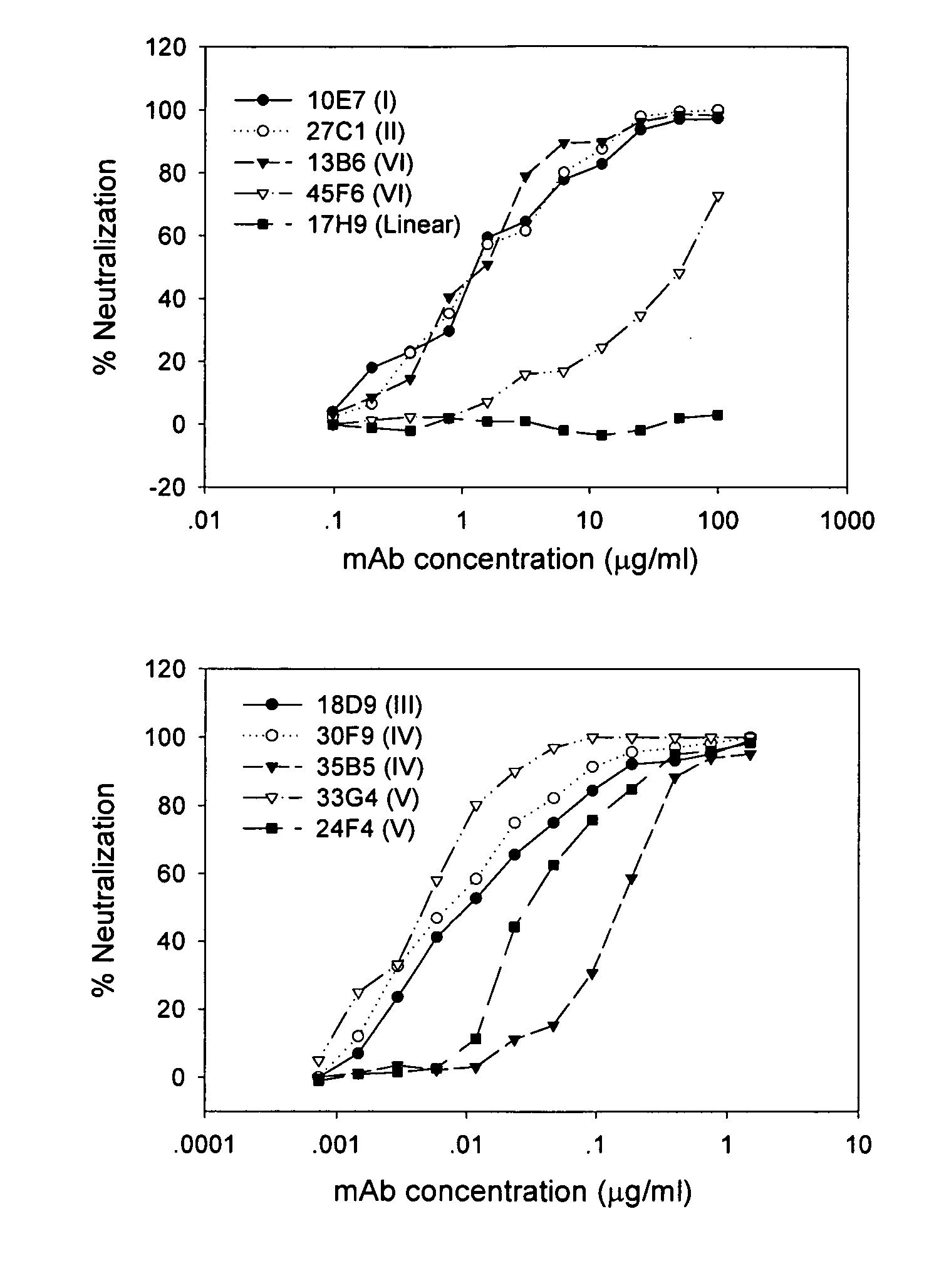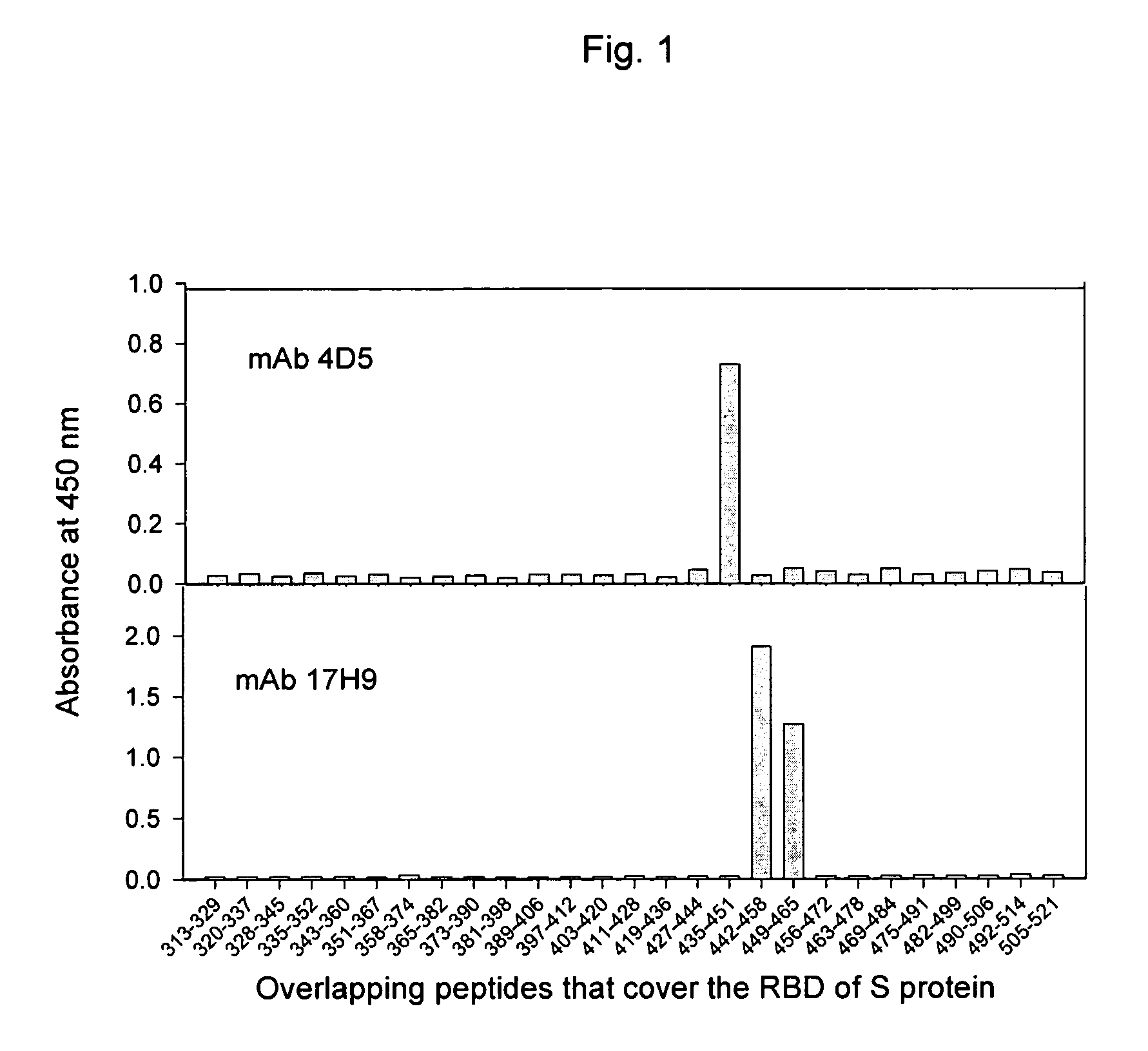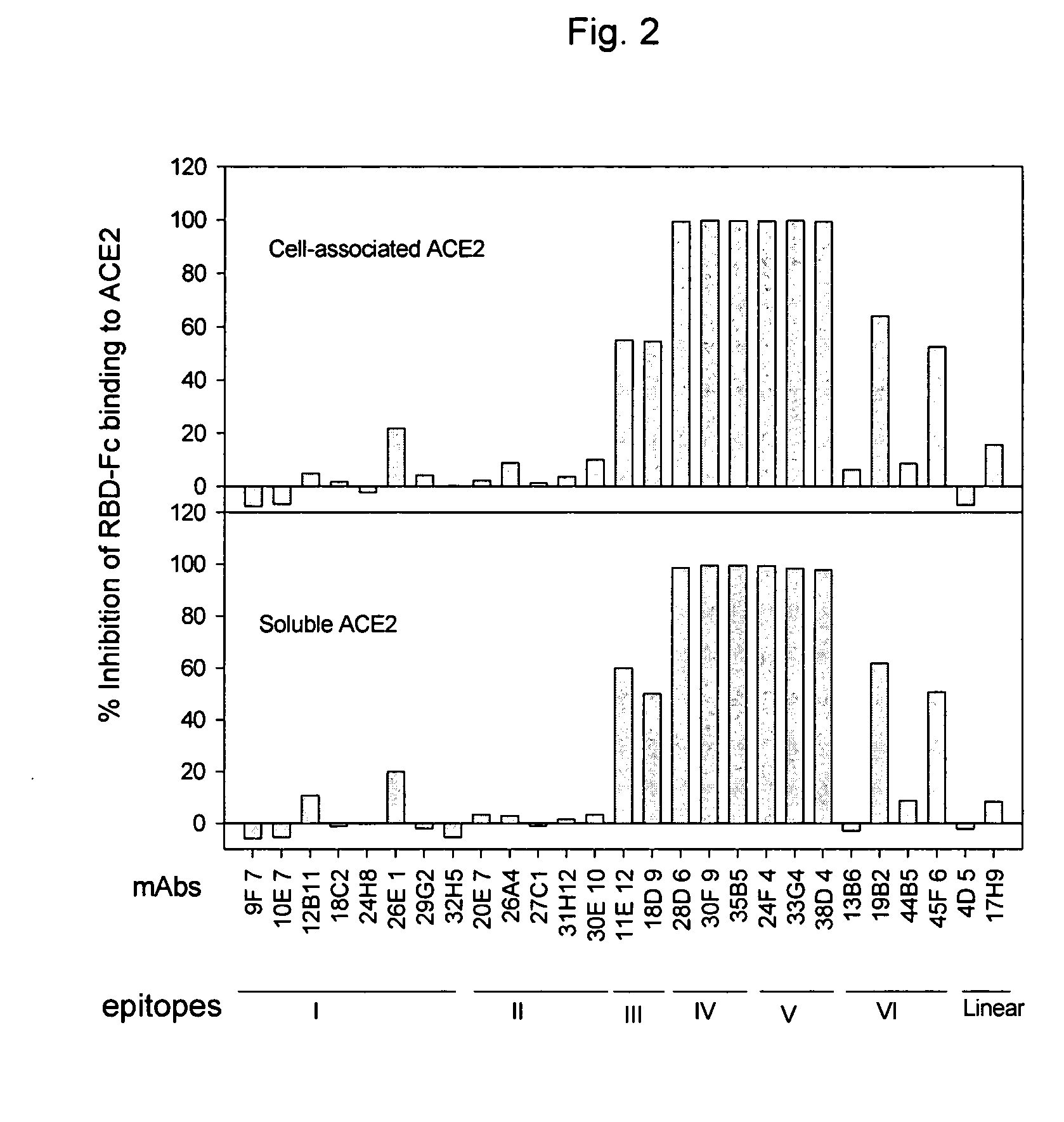Neutralizing monoclonal antibodies against severe acute respiratory syndrome-associated coronavirus
- Summary
- Abstract
- Description
- Claims
- Application Information
AI Technical Summary
Benefits of technology
Problems solved by technology
Method used
Image
Examples
Embodiment Construction
[0022] The present invention provides an isolated monoclonal antibody capable of binding to receptor-binding domain (RBD) of the spike (S) protein of the severe acute respiratory syndrome-associated coronavirus (SARS-CoV) so as to competitively inhibit the binding of the SARS-CoV to host cells.
[0023] The present invention also provides a substance comprising the complementary-determining regions of the monoclonal antibody described above, capable of binding to the same epitope as the monoclonal antibody described above. This substance includes, but is not limited to, a polypeptide, small molecule, antibody, or a fragment of an antibody. In a preferred embodiment, the antibody is neutralizing. In another embodiment, the antibody is a single-chain antibody or antibody-fusion construct; a humanized antibody; or a chimeric antibody as described above. It is the intention of this application to cover different chimeric constructs created using the invented antibodies. The present invent...
PUM
| Property | Measurement | Unit |
|---|---|---|
| Density | aaaaa | aaaaa |
| Density | aaaaa | aaaaa |
| Density | aaaaa | aaaaa |
Abstract
Description
Claims
Application Information
 Login to View More
Login to View More - R&D
- Intellectual Property
- Life Sciences
- Materials
- Tech Scout
- Unparalleled Data Quality
- Higher Quality Content
- 60% Fewer Hallucinations
Browse by: Latest US Patents, China's latest patents, Technical Efficacy Thesaurus, Application Domain, Technology Topic, Popular Technical Reports.
© 2025 PatSnap. All rights reserved.Legal|Privacy policy|Modern Slavery Act Transparency Statement|Sitemap|About US| Contact US: help@patsnap.com



